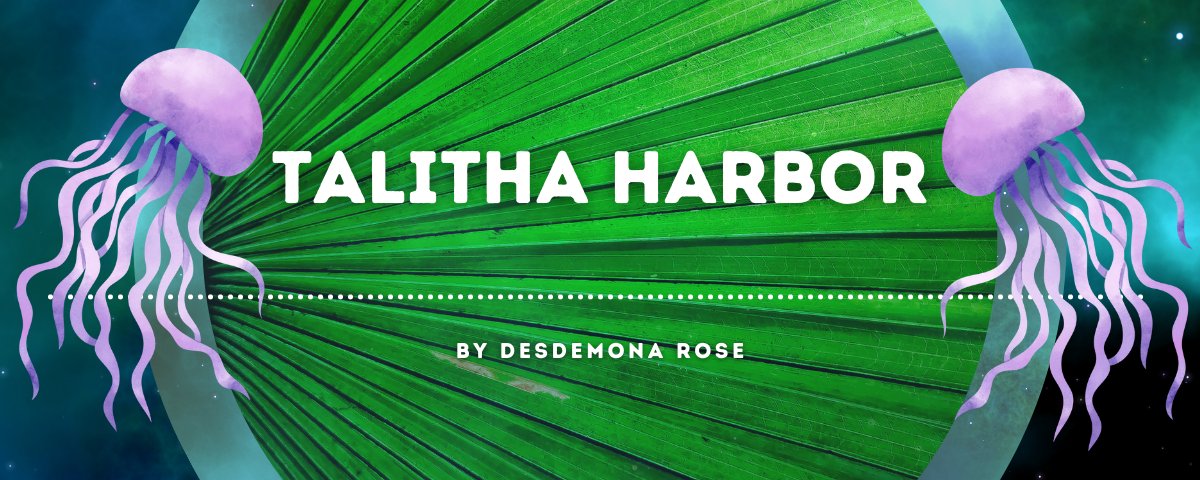Marjallo Flowering Plant
Marjallo is a proliferate plant found in almost every inhabited Talithan Island. The only exception is the more tropical Island of Pangu. It hybernates in the winter, starts to wake up in the spring, and it grows it's buds in the summer. The much loved seedpods drop in early autumn.
The Marjallo plant has a very large and distinctive flower on the top of a long and thick leafy stalk. The flowers have both white and dark blue petals on a single flower head.
Talithans discovered Marjallo's use within the first twenty sol cycles of their landing. They noticed that it put some of the small native crawling critters into frenzy. The arthropods seemed to be addicted and would swarm the plants when it was time for them to drop their seeds.
Their used the science lab they had gutted from their ship to break down the chemical makeup of the seed pods. They discovered that it was safe for human consumption. Instead of creating a heavy euphoric effect, humans found it more relaxing. There was still a slight feeling of being, "high," but it was mild. The Talithans also found it to be non-addictive for most. A small percentage of the population will find it to be addictive if they consume it in large quantities.
The entire plant is edible. The stalks, flowers, and leaves are bitter to human taste. It is favorable for small animal feed. The roots, however, make a nice tea.
Marjallo tea a common drink in Talithan households. It has a small amount of the drug that the seeds have, but the quantity is very small. Most adults won't feel any affect. It is sometimes used for fussy babies. It's most common use is as a warm comforting drink for adults.
Basic Information
Anatomy
Marjallo plant has large flowers with two layers of petals. The larger layer, which can reach a span of five inches, consists of three long white narrow petals that are somewhat leaf shaped and are evenly spaced out. The flower also has six more rounded dark blue petals that are above the white petals. They are evenly spaced between the white petals, and come out of the center of the flower on very thin stocks. There is a gap between the center of the flower and the blue petals. The gap will vary slightly among the flowers, but average around 12 cms.
The flower petals lay flat and open design.
Genetics and Reproduction
When it is time for the flower to reproduce, long and thin filaments will sprout from the center. They reproduce with the wind, the almost microscopic spores flying until they find another flower to fertilize. The sticky part where they spores collect is at the base of those filaments, almost making it seem as if the flowers could reproduce asexually. However, they do not become sticky for three days after they shed their pollen. This makes the chance of cross-flower pollination more likely.
Once fertilized the filaments curl up and the flower will produce three seeds. The seed is covered by a hard substance and will continue to grow until it becomes heavy and falls off of the flower. They fall through the gap between the pistil and the petals.
The hard shell that grows around the seed consists of substance that is addictive to some of the crawling arthropods of Talitha. The creatures will carry the seed pods off, consume the outside, and leave the seed to grow into a new plant.
Ecology and Habitats
The flowers prefer wetter environments and are found more abundantly near the coastal areas. They tolerate the heavy climate change of Talitha well and only go dormant during the coldest of winter. Then their flowers fall off, but the leaves and the stalks will stay. They don't do well in high heat and are not found in southern and more tropical climates.
Though they are more abundant near the coasts, they are not exclusive to that environment. One can find smaller populations of the flowers in the more inland areas.
Scientific Name
Flowering Pod Plant



Comments